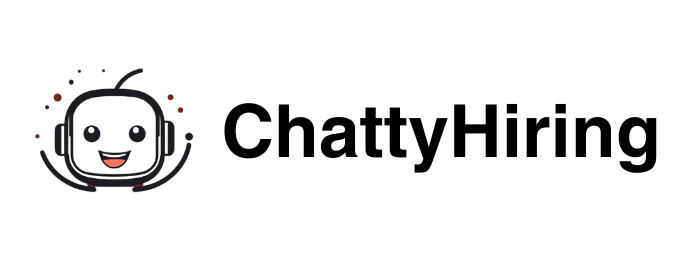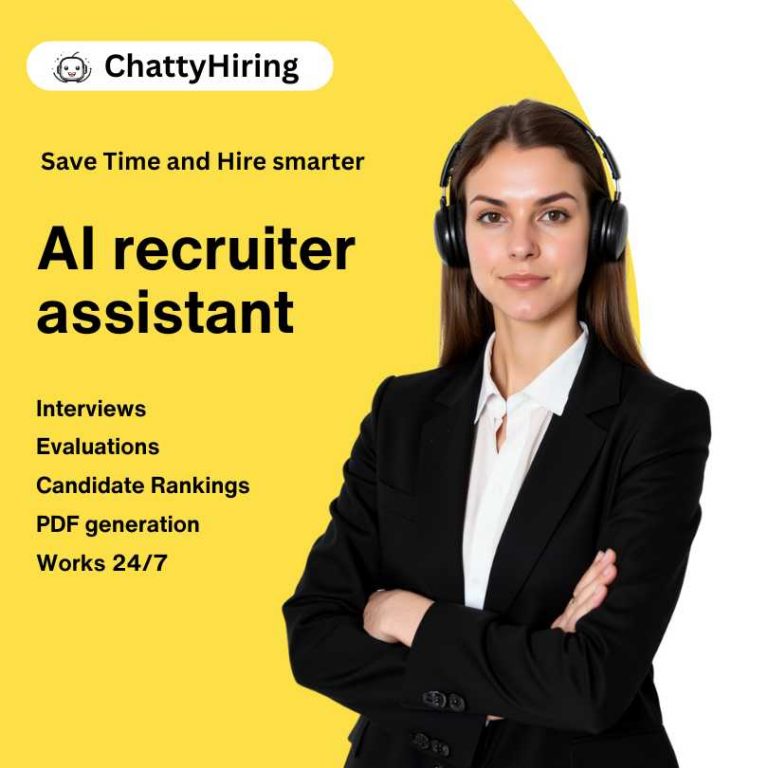Many companies overlook a valuable asset in their recruitment efforts: past candidates. By reactivating these candidates with smart automation, talent acquisition teams can quickly tap into a ready pool of talent without starting from scratch.
Using automation to engage and screen previous applicants speeds up hiring while improving the quality of candidates considered.

Smart automation tools can filter, match, and reach out to candidates who fit new roles, making the process more efficient. This approach reduces time spent searching for fresh applicants and lowers the risk of missing out on qualified people who have already shown interest.
Recruiters who adopt these technologies benefit from a stronger talent pipeline that grows over time. The ability to nurture and re-engage past candidates creates a continuous flow of potential hires.
The Importance of Reactivating Candidates
Reactivating past candidates helps companies maintain a ready supply of qualified talent. It keeps the hiring process efficient by reducing delays and supports the company’s reputation, making it more attractive to top talent.
Building a Strong Talent Pool
Reactivating candidates fills the talent pool with familiar, qualified individuals. These candidates have already been screened and often match the company culture, which saves time in sourcing new applicants.
Engaging past candidates regularly ensures that their information stays current. Automated updates help track changes in skills or availability.
A well-maintained talent pool allows recruiters to quickly identify suitable candidates without starting from scratch. This leads to higher-quality hires and reduces dependence on external job boards.
Reducing Time-to-Hire
Re-engaging candidates shortens the time-to-hire by minimizing the early stages of recruitment. Since candidates know the company and its process, fewer steps are needed to move them through the pipeline.
Automation tools can trigger regular communication with past candidates. This keeps them informed about job opportunities and encourages quicker responses.
By relying on a live talent pool, companies avoid lengthy searches and reduce costs related to advertising and screening. Faster hiring helps fill critical roles promptly.
Enhancing Employer Brand
Keeping past candidates in contact strengthens the employer brand by showing that the company values its talent network. This creates positive impressions even among those not hired initially.
Regular, transparent communication builds trust and keeps the company top of mind for candidates who may recommend it to others. It also improves the experience for candidates who were unsuccessful before.
A strong employer brand attracts higher-quality candidates over time. Demonstrating respect for all candidates, active or inactive, helps maintain a positive reputation in the competitive talent market.
For more strategies on managing candidate engagement, see effective methods in Managing Talent Pools.
What Is Smart Automation in Recruitment?
Smart automation uses technology to make recruiting faster and more efficient. It combines tools that handle routine tasks with advanced systems that improve decision-making, helping recruiters find the right candidates quickly.
Defining Recruitment Process Automation
Recruitment process automation involves using software to perform repetitive tasks like sorting resumes, scheduling interviews, and sending follow-up emails. It frees recruiters from tedious chores so they can focus on assessing candidates more deeply.
Automation systems track applicant progress in real time and manage communications without mistakes or delays. This leads to faster hiring cycles and better organization.
Automating routine steps also lowers the risk of errors or missed candidates, improving the overall efficiency of hiring teams.
Role of Artificial Intelligence
Artificial intelligence (AI) in recruitment goes beyond simple automation. It analyzes large volumes of data to help identify the best candidates based on qualifications, experience, and even cultural fit.
AI-powered tools can screen resumes, score candidates, and predict future job performance using patterns learned from past hires. Automated updates and responses using AI keep candidates informed and engaged throughout the recruitment process.
How Machine Learning Drives Automation
Machine learning (ML) enhances recruitment automation by continuously improving its decisions. It learns from new data, like which candidates succeed or drop out, to fine-tune screening and ranking algorithms.
This adaptive approach helps recruiters react to changing job market trends and candidate behaviors without manual adjustments. ML systems can spot hidden patterns in resumes or candidate interactions that humans might miss, leading to smarter shortlist creation and outreach.
For more details on how these technologies work, see AI in hiring and smart automation.
Key Benefits of Automating Candidate Reactivation

Automating candidate reactivation helps recruiters handle many tasks quickly and accurately. This leads to better communication, fewer delays, and a smoother experience for candidates.
The process makes it easier to engage past candidates, speed up hiring, and improve how candidates feel about recruitment.
Boosting Candidate Engagement
Automation allows recruiters to reach candidates regularly without manual effort. It can send personalized messages based on candidate skills, availability, or past interactions.
This keeps candidates interested and reminded of new job openings. Systems can track candidate responses and adjust communication timing.
This ensures that messages are sent when candidates are most likely to respond. Automation tools also help maintain large candidate lists efficiently, avoiding missed opportunities with promising talent.
By automating these tasks, recruiters spend more time building real relationships rather than chasing administrative duties. For more on this, see how Recruitify enhances talent pool management.
Streamlining the Hiring Process
Automated reactivation reduces time spent on routine tasks like sorting resumes or sending follow-ups. Job postings are distributed quickly, and candidate data is organized for easy access.
Automation can also help identify the best candidates faster by matching skills to open positions. It removes bottlenecks, allowing recruiters to move candidates smoothly through hiring stages.
The result is a leaner process with fewer delays and errors. Recruiters can focus on interviewing and assessing candidates, which improves the quality of hires.
Tools that automate these steps bring clear value by making the hiring process more efficient and measurable.
Improving the Candidate Experience
Automatic updates and timely communications show candidates that recruiters value their time. Clear, consistent contact reduces confusion or frustration often caused by long delays or lack of feedback.
Customized messages make candidates feel recognized, increasing trust in the recruitment process. Automated systems can also collect candidate feedback instantly to understand and improve their experience.
A positive candidate experience helps attract top talent and strengthens the company’s reputation. Candidates are more likely to stay interested and recommend the organization if treated well during reactivation.
Recruitment automation plays a key role in shaping this experience by keeping communication open and personalized throughout the talent acquisition journey.
More on this can be found at recruitment automation benefits.
Recruitment Technology and Tools for Smart Automation

Smart recruitment technology helps recruiters manage candidates efficiently and improve the hiring process. From tracking applications to automating communication and scheduling, these tools save time and reduce errors.
Applicant Tracking Systems
Applicant Tracking Systems (ATS) organize and store candidate data in one place. They streamline tasks like sorting resumes, tracking candidate progress, and managing job postings.
An ATS helps recruiters quickly filter candidates based on qualifications and experience. It also keeps records of interactions and interview feedback.
Many ATS platforms integrate with other recruitment tools, making it easier to manage the entire hiring cycle. Using an ATS ensures no candidates fall through the cracks and speeds up the screening process.
AI Tools for Recruiting
AI tools use machine learning to analyze resumes, rank candidates, and match skills to job requirements. These tools can scan thousands of applications in seconds, saving recruiters time.
They help identify top candidates by focusing on relevant experience and qualifications. AI tools also reduce unconscious bias by using data-driven scoring instead of human judgment alone.
Advanced AI solutions can predict candidate success, improving the quality of hire. Some systems combine natural language processing to better understand resumes and job descriptions, enhancing matching accuracy.
Automated Text Message Campaigns
Automated text message campaigns keep candidates engaged throughout the hiring process. These systems send reminders, interview invites, and updates quickly without manual effort.
Texts have high open rates, making this one of the most effective communication methods. Recruiters can set up customized messages targeted for different candidate groups or stages.
Using automated texting improves candidate experience and reduces no-shows for interviews. It also saves recruiters time spent on follow-ups and ensures timely communication.
Interview Scheduling Solutions
Interview scheduling software automates calendar coordination between candidates and hiring teams. It eliminates back-and-forth emails by letting candidates select available times directly.
These tools sync with multiple calendars, handle time zones, and send automatic reminders. This reduces missed appointments and scheduling conflicts.
By automating interview coordination, recruiters spend less time managing logistics. It also speeds up the hiring process, helping employers secure excellent talent faster.
Effective Candidate Segmentation and Personalization
Breaking down candidate data into useful groups helps recruiters target the right people with relevant messages. Tailoring communication based on these groups increases engagement and improves the chances of reactivating past candidates effectively.
Segmentation Strategies for Talent Pipelines
Segmenting candidates means sorting them into groups based on clear criteria. Common factors include skills, experience level, job role interest, location, and past application status.
This allows recruiters to focus outreach on candidates most likely to be interested and qualified. For example, a company can separate entry-level applicants from senior professionals or group candidates with specific technical skills.
Using simple categories first helps avoid data overload and makes analysis easier. Over time, segmentation can evolve to include more detailed traits, such as availability or career goals.
Proper segmentation prevents sending irrelevant job offers. It also reduces candidate frustration by respecting their preferences, thus maintaining a stronger talent pipeline.
Learn more about segmentation from this nurture your recruitment strategy.
Personalizing Outreach With Smart Automation
Automation tools can help send personalized emails or messages at scale. Smart systems use candidate data to adjust content automatically, like addressing people by name or referencing their skills.
For example, automation can schedule follow-up emails based on how candidates interacted with earlier messages. Systems can also flag candidates who stopped responding and target them with tailored re-engagement offers.
Using automation in personalization also improves timing. Messages show up when candidates are likely active or open to new opportunities.
Many companies automate tasks like email sending and interview scheduling to keep personalized contact consistent and efficient. More on this can be found in The Power of Personalization in Recruitment.
Leveraging Data-Driven Insights in Talent Acquisition
Data-driven insights help companies make clear decisions when finding and hiring candidates. By focusing on measurable information, organizations can target the right people, track success, and spot trends.
Using Predictive Analytics in Sourcing
Predictive analytics uses historical data to forecast which candidates will fit roles best. It analyzes past hiring successes, employee performance, and candidate behavior to prioritize the most promising applicants.
Companies can automate sourcing by scoring resumes or profiles based on key job requirements. These scores guide talent acquisition professionals toward candidates more likely to succeed.
This method also helps identify skills gaps to focus sourcing efforts on specific talent pools. Using predictive analytics improves efficiency and supports making decisions backed by data instead of gut feelings.
Performance and Key Metrics
Tracking performance metrics is essential to measure how well talent acquisition efforts work. Important metrics include:
- Time to fill open positions
- Candidate quality and fit
- Source of hire effectiveness
- Offer acceptance rates
Regularly reviewing these numbers shows where processes slow down or where candidate quality drops. It helps recruiters prioritize strategies that deliver results and cut waste from less effective sourcing channels.
Clear, easy-to-understand dashboards allow teams to communicate success and challenges. This transparency supports faster improvements and better alignment with company goals.
Data-Driven Hiring Patterns
Analyzing hiring patterns reveals trends over time that impact recruitment success. Companies can identify which groups apply most often, which hiring stages cause drop-offs, or whether diversity goals are improving.
These patterns also show seasonal or economic effects on candidate flow. Understanding this allows better workforce planning and more targeted outreach.
By studying patterns, organizations can spot bias or process inefficiencies. They can then adjust policies to promote fairness and improve the candidate experience.
For more on this topic, visit Leveraging Data Analytics for Smarter Talent Acquisition Strategies.
Advanced Candidate Search Techniques
Efficient talent search combines careful analysis of language and intent with specific sourcing methods. This helps recruiters find top talent by understanding meaning, using precise search commands, and interpreting what candidates are looking for or what matches in their profiles.
Semantic Search and Contextual Meaning
Semantic search uses natural language processing to understand the meaning behind words, not just exact matches. It lets systems recognize synonyms, related phrases, and context within resumes and profiles.
For example, searching for “software developer” might also find candidates labeled as “programmer” or “software engineer.” This improves search results by focusing on intent and avoiding missed matches caused by simple keyword searches.
Semantic search boosts the relevance and richness of candidate pools by understanding how terms connect in different contexts.
Applying Boolean Search and Find Similar
Boolean search uses logic operators like AND, OR, and NOT to create precise, customized queries. Talent acquisition professionals use it to include or exclude key skills, locations, or experiences.
A search string like “Java AND (Python OR C++) NOT junior” filters for experienced developers with certain skills. “Find similar” tools go beyond keywords and scan profiles for patterns that match a top performer’s CV.
This helps discover passive candidates who fit well but may not be found through traditional searches.
Understanding Search Intent
Search intent focuses on why a recruiter or candidate performs a query. Understanding whether the goal is to fill a specific skill gap, explore new talent markets, or identify career changers guides how searches are structured.
Recognizing search intent allows talent acquisition pros to select the right tools and tailor results to the actual hiring need. It also affects candidate experience by providing more relevant matches and reducing irrelevant results in the talent pool.
Effective use of search intent enhances the overall search experience and efficiency.
Optimizing Candidate Screening and Shortlisting
Streamlining the process of reviewing candidates helps recruiters focus only on the most relevant applicants. Using technology, recruiters can reduce time spent on manual tasks and improve quality of hire by focusing on data-driven insights and clear criteria.
AI in Candidate Screening
AI tools analyze resumes and application data quickly to identify key skills, experience, and qualifications that match the job description. This automation reduces human error and speeds up initial screenings, filtering out unqualified candidates early.
Many AI systems include features like conversational chatbots to engage candidates, gather additional info, and even schedule interviews automatically. AI can also help detect unconscious bias by focusing on relevant job criteria rather than subjective impressions.
Recruiters benefit from real-time analytics that show response rates and candidate quality. This feedback helps improve screening strategies over time to attract a better talent pool.
Shortlisting Qualified Candidates Efficiently
Creating a shortlist involves selecting candidates who best fit the role based on objective criteria. Automated shortlisting tools rank candidates and highlight those who meet or exceed requirements.
Recruiters save time by reviewing a curated list rather than sifting through endless resumes. The shortlist enables hiring managers to focus on top candidates quickly.
Tools that blend AI screening with manager review ensure the final selection matches both technical needs and company culture. This approach reduces bottlenecks and improves hiring speed without sacrificing quality.
For more information on how AI can improve candidate screenings, visit the page on the best candidate screening automation tools.
Ensuring Diversity and Fairness Through Automation
Automation can help companies widen their talent pool and improve recruitment fairness. It requires focused strategies to engage diverse candidates and tools that limit bias in evaluation.
Inclusive Talent Acquisition Strategies
Talent acquisition efforts must target diverse groups, not just individuals. This means designing job descriptions that appeal to a variety of backgrounds.
Automation can analyze language in listings to improve inclusivity and avoid exclusive terms. Companies benefit from regularly reviewing recruitment data for diversity at every stage.
This includes tracking the demographic mix of candidates who apply, interview, and receive offers. Automated systems can flag gaps and suggest adjustments.
Building partnerships with organizations that serve underrepresented communities also improves access to diverse talent. Automated candidate reactivation helps re-engage past applicants from varied backgrounds, expanding the pool.
Reducing Bias With AI
AI-driven recruitment can reduce human bias if it’s carefully designed and monitored. Bias often comes from unrepresentative training data or flawed algorithms.
Ensuring diverse and balanced data sets is critical. Automated tools can anonymize candidate details to prevent unconscious bias in early screening.
AI can also score resumes and interviews using consistent criteria, leading to fairer comparisons across applicants. However, automation isn’t perfect.
Companies must continuously assess AI outcomes and adjust models to avoid reinforcing existing disparities. Combining AI with human oversight improves fairness and leads to better hiring decisions.
For more detail on these strategies, see how AI can support fairness and reduce bias in recruitment through algorithmic bias research.
Empowering HR Teams and Hiring Managers
Effective talent acquisition requires clear roles and shared responsibility among HR teams and hiring managers. Both groups must work closely and understand new tools to maximize recruitment results.
This includes smooth communication and ongoing skill development.
Collaboration in the Recruitment Process
Collaboration between HR teams and hiring managers improves candidate selection and speeds up hiring. Hiring managers bring deep knowledge of the job and team needs, while HR focuses on sourcing and process management.
To boost teamwork, organizations can:
- Involve hiring managers early in defining job requirements
- Share candidate data and feedback in real time
- Set clear hiring goals and accountability for each step
This approach ensures candidates fit both skill-wise and culture-wise. It also builds trust and ownership, allowing hiring managers to make confident choices and HR to provide better support.
When both parties co-own recruitment, the process becomes more efficient and effective.
Training for Automation Adoption
Introducing automation tools requires training HR teams and hiring managers thoroughly. Without proper knowledge, these tools risk being underused or misapplied.
Training should cover:
- How to use AI-driven candidate matching and screening features
- Interpreting data insights that automation provides
- Best practices for combining automated suggestions with human judgment
Regular workshops and hands-on sessions can improve comfort levels. When users understand automation’s benefits and limits, they feel empowered instead of threatened by technology.
This leads to smarter decisions, faster hiring, and better candidate reactivation efforts. Training also helps teams stay up to date as tools evolve, keeping recruitment competitive and streamlined.
For more insights on empowering hiring managers in hiring, visit this article on empowering hiring managers as an extension of talent acquisition.
Measuring Success and Continuous Improvement
Tracking how well talent reactivation performs requires careful attention to specific data points and ongoing adjustments. This process involves regularly reviewing recruitment results and using those insights to refine automation tools.
Analyzing Key Recruitment Metrics
Measuring success begins with identifying the most important key metrics. These include time-to-hire, candidate response rates, and re-engagement levels from previously contacted talent pools.
Monitoring the quality of hires through performance scores and retention rates is also critical. Using data analytics helps reveal which parts of the reactivation process work best and which don’t.
For example, a low response rate may signal the need to change messaging or timing. Detailed reports should track:
- Candidate engagement rates
- Interview-to-offer ratios
- Quality of hire metrics, such as early turnover or performance reviews
By focusing on these performance metrics, organizations gain a clearer picture of recruitment efficiency and the impact of their automation strategies.
Iterative Improvements in Smart Automation
Continuous improvement depends on using the collected metrics to adapt automation processes. Smart automation platforms allow recruiters to test variations of outreach campaigns automatically and compare results.
Regularly updating candidate segmentation models based on new data enhances targeting precision. Automation can also adjust communication frequency or content using performance feedback loops, improving candidate responsiveness over time.
The process often includes:
- Running A/B tests on email templates
- Adjusting trigger rules for candidate reactivation
- Integrating new performance data into machine learning algorithms
These steps help maintain a dynamic talent pool, increase recruitment speed, and improve overall hiring outcomes. Automation should never be static; it requires ongoing tuning to be effective.
For strategies on maximizing talent acquisition through data, see guidance on tracking talent metrics that matter.
The Avature Advantage for Candidate Reactivation
Avature offers robust tools designed to keep talent pools active and engaged. It combines AI-driven features with automation to simplify candidate reactivation and improve communication over time.
These capabilities help recruiters manage large groups of candidates while maintaining personalized outreach and efficient workflows.
Unique Features for Talent Pool Management
Avature’s candidate relationship management system focuses on nurturing talent pipelines. It uses AI-powered semantic search to find hidden or previously overlooked candidates by understanding intent beyond keyword matching.
This expands the pool with higher-quality matches. Smart automation allows setting up personalized email campaigns that adapt based on candidate responses.
Recruiters can schedule follow-ups, track engagement, and automatically update candidate status without manual effort. The platform also supports candidate scoring and segmentation.
This means recruiters can prioritize outreach to the most promising candidates according to custom criteria, ensuring time and resources are used effectively.
Integrations and Workflow Automation
Avature connects smoothly with other HR tools and job boards. This creates a unified system for talent management.
Its automation features handle routine tasks like screening and dispositioning candidates using custom rules. Recruiting teams can design workflows that route applicants automatically based on their qualifications and engagement level.
This approach speeds up candidate reactivation. It also helps reduce bottlenecks in hiring cycles.
With built-in analytics, teams can monitor key metrics like response rates and pipeline health. This enables data-driven decisions about where to focus sourcing and recruitment efforts.
Learn more about how Avature enhances talent pools and automation on their candidate relationship management page.
-

A passionate advocate for the future of HR innovation. With expertise in leveraging AI to revolutionize recruitment processes, Carlos has a clear vision: empower HR teams while creating meaningful candidate experiences.
View all posts





